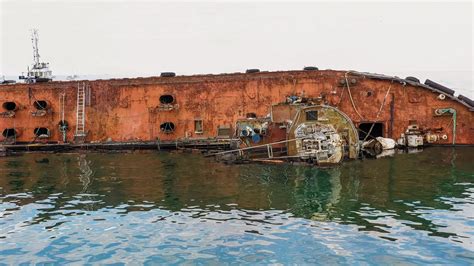Allision, a term often misunderstood or overlooked in various contexts, refers to the act of a vessel or a floating structure coming into contact with a fixed object, such as a pier, wharf, or another vessel that is moored or anchored. This concept is crucial in maritime law, insurance, and safety regulations, as it can lead to significant damages, injuries, or even loss of life. Understanding allision is essential for ship owners, operators, and regulatory bodies to prevent such incidents and to manage their aftermath effectively.
Definition and Distinction from Collision

Allision is distinct from collision, although the two terms are often confused with each other. A collision occurs when two moving vessels come into contact with each other. In contrast, allision involves a moving vessel and a stationary object. This distinction is vital for determining liability and for insurance purposes. For instance, if a ship runs into a dock, it is considered an allision, whereas if two ships crash into each other while both are in motion, it is a collision. The differentiation between these two events can significantly impact the legal and financial responsibilities of the parties involved.
Causes and Prevention
Allision can be caused by a variety of factors, including navigational errors, equipment failure, adverse weather conditions, and human error. Prevention is key and involves a combination of proper training for crew members, regular maintenance of vessels, adherence to safety protocols, and the use of advanced navigational technologies. Moreover, understanding the hydrodynamic and environmental factors that can affect a vessel’s movement, such as currents and wind, is crucial for safe navigation and the prevention of allision incidents.
| Type of Incident | Description | Example |
|---|---|---|
| Allision | Contact between a moving vessel and a fixed object | A ship hitting a pier |
| Collision | Contact between two moving vessels | Two ships crashing into each other |

Key Points
- Allision refers to the contact between a moving vessel and a stationary object, such as a dock or another moored vessel.
- The distinction between allision and collision is crucial for legal and insurance purposes, affecting liability and financial responsibilities.
- Causes of allision include navigational errors, equipment failure, adverse weather conditions, and human error, emphasizing the need for comprehensive safety measures.
- Prevention of allision incidents involves crew training, vessel maintenance, adherence to safety protocols, and the use of advanced navigation technologies.
- Understanding the differences between allision and collision is essential for ship owners, operators, and regulatory bodies to manage risks and ensure maritime safety.
Legal and Insurance Implications

The legal and insurance implications of allision can be significant. In many jurisdictions, the liability for damages resulting from an allision incident may be attributed to the vessel’s owner or operator, depending on the circumstances. Insurance policies often cover such incidents, but the extent of the coverage can vary widely depending on the policy terms and the specific events leading to the allision. Therefore, it is crucial for vessel owners and operators to have a clear understanding of their legal and financial responsibilities, as well as the terms of their insurance coverage.
Maritime Safety Regulations
Maritime safety regulations play a critical role in preventing allision incidents. These regulations, which are set by international bodies such as the International Maritime Organization (IMO) and enforced by national authorities, cover a wide range of aspects including vessel design, crew training, navigation practices, and safety equipment. Compliance with these regulations is essential for minimizing the risk of allision and ensuring the safety of vessels, their crews, and the environment.
What is the main difference between allision and collision in maritime terms?
+The primary difference between allision and collision is that allision occurs when a moving vessel comes into contact with a stationary object, such as a dock or a moored vessel, whereas a collision happens when two moving vessels come into contact with each other.
How can allision incidents be prevented?
+Allision incidents can be prevented through a combination of proper crew training, regular vessel maintenance, adherence to safety protocols, and the effective use of advanced navigational technologies. Understanding environmental factors such as currents and wind is also crucial.
What are the legal implications of an allision incident?
+The legal implications of an allision incident can include liability for damages, which may be attributed to the vessel’s owner or operator. The extent of liability can depend on the specific circumstances of the incident and the applicable laws and regulations.



